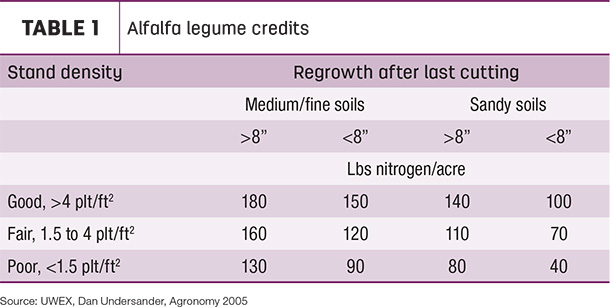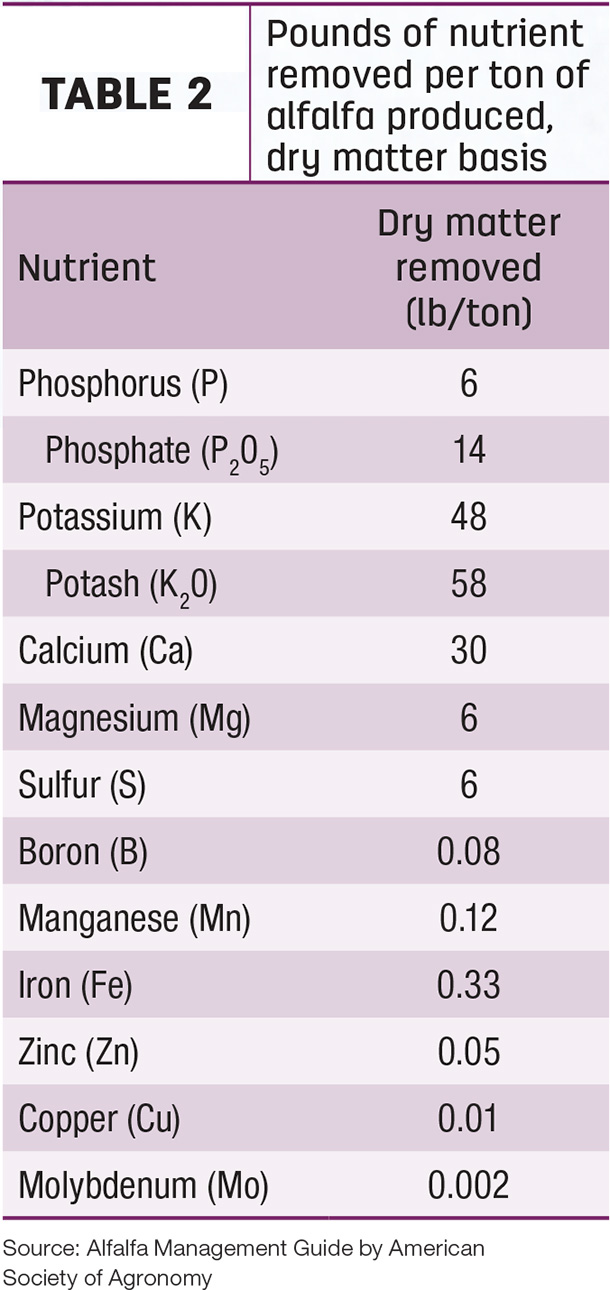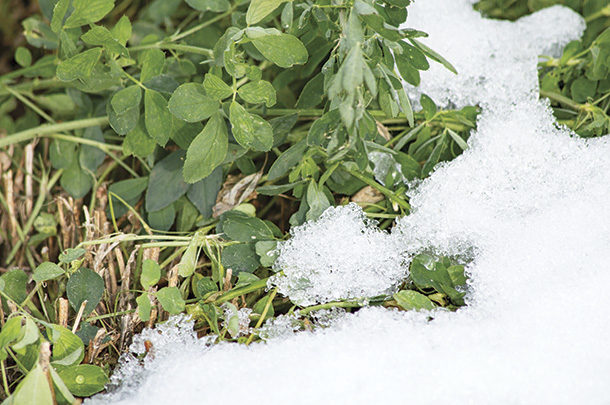Every year, there are new challenges, and this year offered plenty of new management opportunities. Let’s review some agronomic fundamentals to help you stay on track to meet or exceed your production goals and make confident planning decisions.
Soil testing
Soil variation within a field can be significant. Regular soil testing provides a detailed inventory of nutrients on your farm. Taking accurate soil tests allows you to see specific needs throughout a field to ensure fertilizer will be applied where it is needed most. For the most accurate fertilizer placement, consider using variable-rate technology to make your fertilizer and lime applications.

When conducting a soil test, it’s important to know your goals for the crop and crop removal rates. Below are some benchmarks for good alfalfa field fertility. Keep in mind, excessive fertility may not show any yield response.
- pH: 6.8 to 7.2
- Phosphorus: 15 to 20 ppm
- Potassium: 150 to 200 ppm
- Boron: 1 to 2 pounds per acre annually
- Sulfur: 20 to 30 pounds per acre annually
Fall applications of potassium, phosphorus and sulfur
Fall is a perfect time to “winterize and fertilize” your alfalfa. Potassium (K), phosphorus (P) and sulfur (S) applications in the fall are important for high-yield and high-quality alfalfa. First-crop alfalfa growth is often difficult to fertilize during wet soil in the spring, and wheel tracks can cause damage to stands. Plus, fertilizer prices will likely be higher in spring.
Manure applied prior to alfalfa seeding is an excellent supplement to fertilizer. Manure provides several recycled nutrients, especially P. While manure can be a good long-term P source, it does not provide adequate K long-term for high-yield alfalfa. K must be replaced at a rate of 50 pounds per ton of dry matter harvested. Manure on established alfalfa generally reduces yields and is not recommended.
S should be applied in the fall as gypsum or elemental S at a rate of 5 to 6 pounds per ton of expected forage yield. S is one of the most important nutrients alfalfa needs to make protein.
Lime
Ideally, lime should be applied one year before seeding alfalfa, and fall is a great time to apply it. Using lime to neutralize pH levels helps ensure higher rhizobium activity, more nutrient availability and higher alfalfa yields.
Nitrogen
Including alfalfa in your crop rotations allows you to “grow” your own nitrogen (N). Aside from producing several years and tons of forage, alfalfa leaves a substantial amount of N in the soil when fields are rotated to another crop. The second year following an alfalfa crop can supply up to an additional 40 to 50 units of N.
If you do the math, the N from alfalfa in rotation is worth big money. Depending on costs next year, N could exceed $1 per unit in 2022, so even a modest credit from alfalfa could equate to $100 per acre alfalfa credit. It’s important to note, alfalfa must be established for at least two years to produce the nitrogen credits. No other legume crop even comes close to producing and leaving this much “salvage value” behind for following crops like corn or wheat.
Replace nutrients based on actual yields
Along with soil testing, know your actual alfalfa yields and replace the nutrients at crop removal rate.

Comparing the ratio of fertilizer prices to the cost of purchased dry matter is also important. Purchased hay, corn or soybean meal is expensive. Likewise, fixed costs like land, machinery and labor are expensive and remain the same regardless of yield. Cutting back on your fertility will only return yield reductions. Stay focused through these challenges, start with good soil tests, and develop a plan for applying the right amount of fertilizer needed. As spring comes, pay close attention to insect and disease pressure early so you have time to respond and can better protect the yields you’ve worked so hard to produce.
Growing a successful alfalfa crop requires careful management, but if you follow these guidelines, you’ll be on a strong track for success in 2022.











